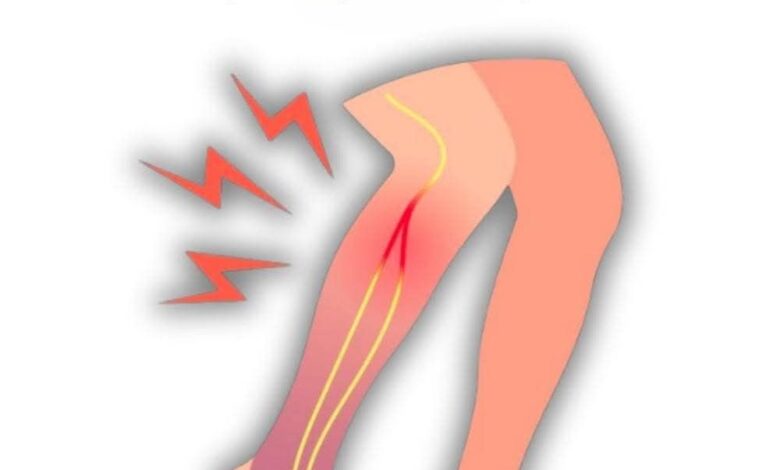5 Hidden Reasons Your Legs Feel Weak After 50 (Plus Expert Solutions!)

Experiencing leg weakness as you enter your golden years is more common than you might think. Many seniors notice difficulty standing from chairs, climbing stairs, or maintaining balance during daily activities.
The encouraging news? Understanding the root causes of leg weakness empowers you to take targeted action. This comprehensive guide explores why muscle strength declines with age and provides evidence-based strategies to maintain your mobility and independence.
Understanding Age-Related Leg Weakness: The Science Behind It
Leg weakness isn’t an inevitable part of aging that you must simply endure. Multiple factors contribute to this condition, and recognizing them is your first step toward effective treatment and prevention.
1. Age-Related Muscle Loss (Sarcopenia)
Sarcopenia represents the most significant contributor to leg weakness in older adults. Medical research indicates that individuals typically experience a 15% decline in muscle strength per decade after age 50, though individual variation exists.
Sedentary lifestyles accelerate this muscle deterioration, making consistent physical activity crucial for preserving muscle mass and functional capacity.
2. Decreased Physical Activity Levels
Reduced mobility creates a destructive cycle affecting senior health. As aging adults become less active, their muscles weaken progressively, making future movement increasingly difficult.
Physical inactivity also contributes to poor blood circulation, joint stiffness, and metabolic conditions like type 2 diabetes. Maintaining regular exercise routines, regardless of intensity level, significantly impacts leg strength preservation.
3. Chronic Medical Conditions
Several long-term health conditions directly impact lower extremity strength. Arthritis, diabetes, and peripheral neuropathy can compromise balance and stability, creating mobility challenges.
Diabetic nerve damage often triggers fear of falling, leading to reduced activity levels that worsen existing weakness. Collaborative medical management with healthcare providers, combined with physical therapy and structured exercise programs, helps prevent further functional decline.
4. Spinal and Back-Related Issues
Lower back conditions including spinal stenosis, herniated discs, and sciatica can affect nerve pathways to the legs, resulting in weakness or pain.
These spinal problems often discourage movement, yet maintaining appropriate activity levels remains essential. Gentle exercises supervised by licensed physical therapists can help manage pain while preserving leg strength.
Seek immediate medical attention if you experience severe numbness, tingling, or weakness in your lower extremities.
5. Psychological and Motivational Factors
Mental health changes significantly impact physical wellness in seniors. Life transitions such as retirement, depression, or bereavement can diminish motivation for staying active.
Career changes may disrupt established exercise routines, leading to decreased movement and subsequent weakness. Building strong support networks is vital for maintaining motivation.
Exercising with companions, joining senior fitness programs, or engaging family support provides both encouragement and social connection to sustain activity levels.
Essential Strategies for Maintaining Leg Strength
While leg weakness commonly affects aging adults, it’s frequently reversible with proper intervention. Regular physical activity serves as your primary defense against muscle loss and related complications.
Managing chronic health conditions and maintaining spinal health are equally important. Additionally, emotional support and motivation play crucial roles in successful outcomes.
Evidence-Based Home Exercise Program
Chair Rise Exercise
Practice standing and sitting movements to build functional leg strength. Begin with a higher chair or cushioned seat if needed, progressing to hands-free movements as strength improves.
Unilateral Lunges
These exercises target individual leg muscles while challenging balance systems. Step forward, lower your back knee gently, then return to standing position. Use wall support if balance assistance is needed.
Walking Program
Walking remains one of the most effective exercises for senior fitness. Start on level surfaces, using mobility aids as needed for stability. Gradually increase distance and incorporate gentle inclines as confidence builds.
The Bottom Line: Your Path to Stronger Legs
Remember that any movement surpasses inactivity, and consistency is the foundation of maintaining leg strength and independence throughout your senior years.
If you’re uncertain about beginning an exercise program, consult with your healthcare provider, physical therapist, or fitness professional. Taking action today will benefit your future quality of life immeasurably.
Always consult with healthcare professionals before beginning any new exercise program, especially if you have existing medical conditions or concerns about your physical capabilities.